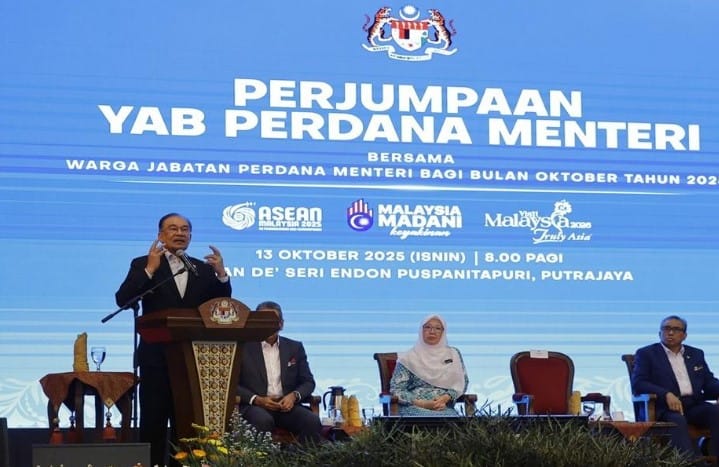
KUALA LUMPUR, May 20 – Malaysian banks are quite robust with a clear position of strength in facing the bump of the COVID-19 crisis and seen better placed compared to their regional peers, said S&P Global Ratings.
Associate, APAC Financial Institutions, Nancy Duan said Malaysian banks are in a position of strength, based on gross non-performing loan (NPL), as well as Common Equity Tier 1 (CET1) ratio which compares a bank’s capital against its assets.
As at December 2019, Malaysia’s banks CET-1 Ratio stood solid 14 per cent while gross NPL at 1.5 per cent, the lowest in the region, she said.
“But there is some weaknesses in the profile as well coming from the earnings with consistent net interest margin (NIM) compression in Malaysian Banks at 5.0 to 10 basis points (bps) every year in the past decade which would impair the earnings retention capability of the banks in facing the COVID-19 headwind.
“Interest margin is already sliding negative compared to regional peers in the past years and expected to further downside this year, given overnight policy rate slashes by Bank Negara Malaysia this year, which is expected to further squeeze the NIM,” she said in a webinar titled “COVID-19: How are Malaysian Banks Placed in A Turbulent 2020?”
She also highlighted that Malaysia’s key economic indicators are also showing the downside risk amid the pandemic crisis with unemployment rate is expected to deteriorate from 3.3 per cent in 2019 to 4.3 per cent this year.
“Unemployment rate has a very high correlation with asset quality trend for Malaysian banks.
“Malaysian banks have high proportion of household exposure at 58.2 per cent of loan book, so extensive lay off would have high correlation on a bank quality book.” Duan said.
However, in base case scenario S&P Ratings do not expect any sharp deterioration of asset quality in Malaysian banks but rather a gradual weakening of the asset quality ratio over this year and next year to around 3.0 per cent.
Although credit cost is expected to increase to almost 60 bps, she said Malaysian banks are still better place compared to others in the region.
The key assumptions underpinned the baseline views include 50 per cent provision coverage required for any additional COVID-19 related non-performing assets (NPAs), employment conditions remain stable with no large layoffs and some spillover of borrower defaults (caused by COVID-19 disruptions) over 2020 and 2021, resulting to an increase in the 2021 credit cost.
Among banks under its coverage, S&P Ratings had given A rating with stable outlook for Public Bank and A- with stable outlook for Maybank and CIMB which were on par or higher than sovereign rating of Malaysia which is at A-, and believed that the government is highly supportive of the banking industry.
“The banks enjoyed 2.0 to 3.0 notches of stand-alone credit profile (SACP) protection. Therefore, at this juncture the rating downgrade is very unlikely, given the current scenario,” she noted.
Commenting on merger and acquisition, Director, APAC Financial Institutions, Ivan Tan said he does not see the activity in the sector this year.
In facing COVID-19, he said the banking sector is in defensive mode this year, focusing on strategy to minimise loss whereby most of the attentions are directed towards maintaining their long-term asset quality as the economies slowed down.
“Even if looking at business as usual condition, there had been attempt to merge in the like of RHB and CIMB and most had fell through due to lack of strong business synergies as most of them had the same customer profile, and the probably synergy would be more on cost cutting and lay off.
“Amid the current crisis with COVID-19 and political situation, it is not palatable to execute the exercise, particularly if it involved job cut,” he said.
On moratorium given by banks to individual and small and medium enterprises, he said it was one of the most generous in the region and Tan believes it is sufficient at this point, given the projection of U-shape economic recovery to over seven per cent in 2021.
He said with the moratorium, the NPL will stay flat and delay the pain of the banks to 2021.
“Removing the distortion by the moratorium, the actual NPL ratio is set to rise to 2.7 per cent by end of the year from 1.5 per cent in 2019 and credit cost to increase to 57 bps from 17 bps,” he said.
However, he added that the Malaysian banks liquidity remained strong despite not being able to collect loan interest and principle until October this year as the loan growth was projected to be around lower single digit, hence, the need for funding is quite low.
– BERNAMA





More Stories
Malaysia, Brazil Sign Memorandum To Cooperate In Semiconductor Sector – Liew
RM7.9 Billion For TVET To Enhance Local Skilled Talent Development
Budget 2026 Reflects Govt’s Commitment To Integrity, Curbing Leakages – Azam